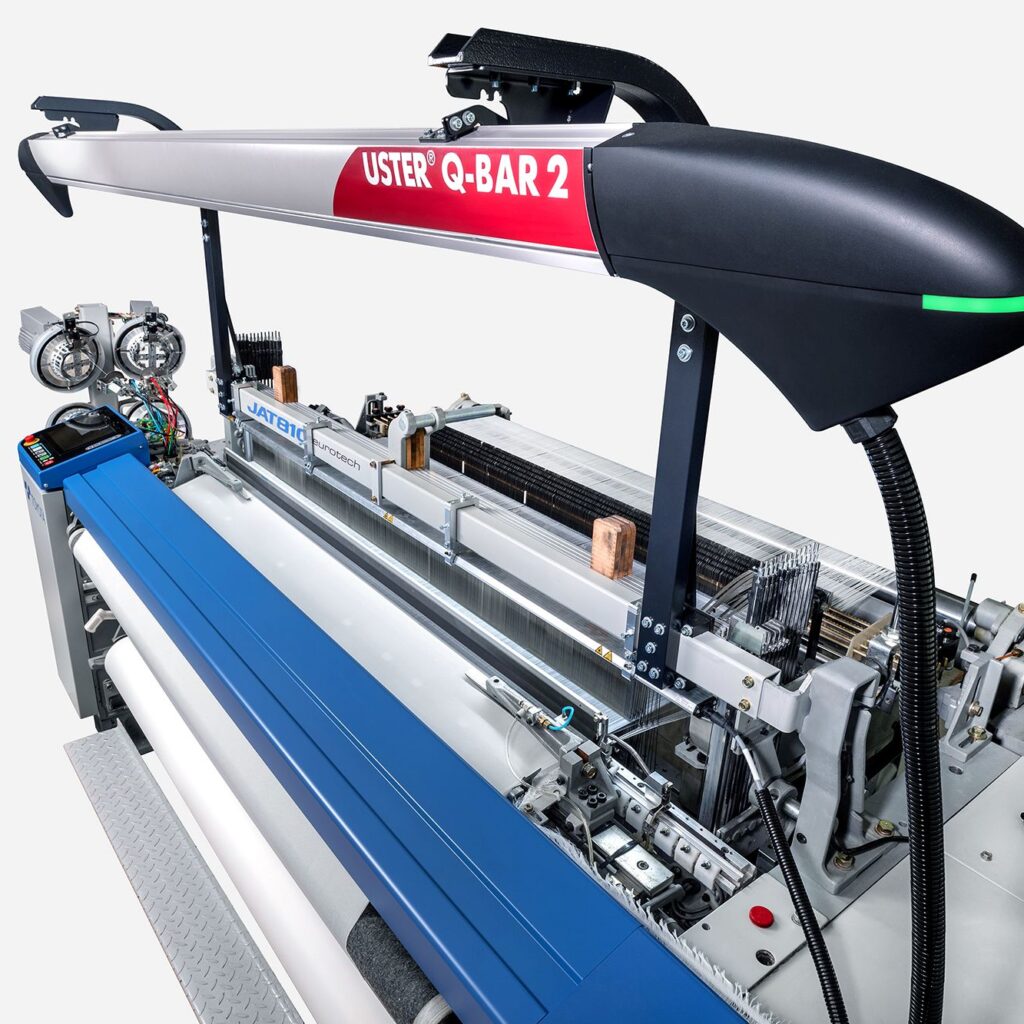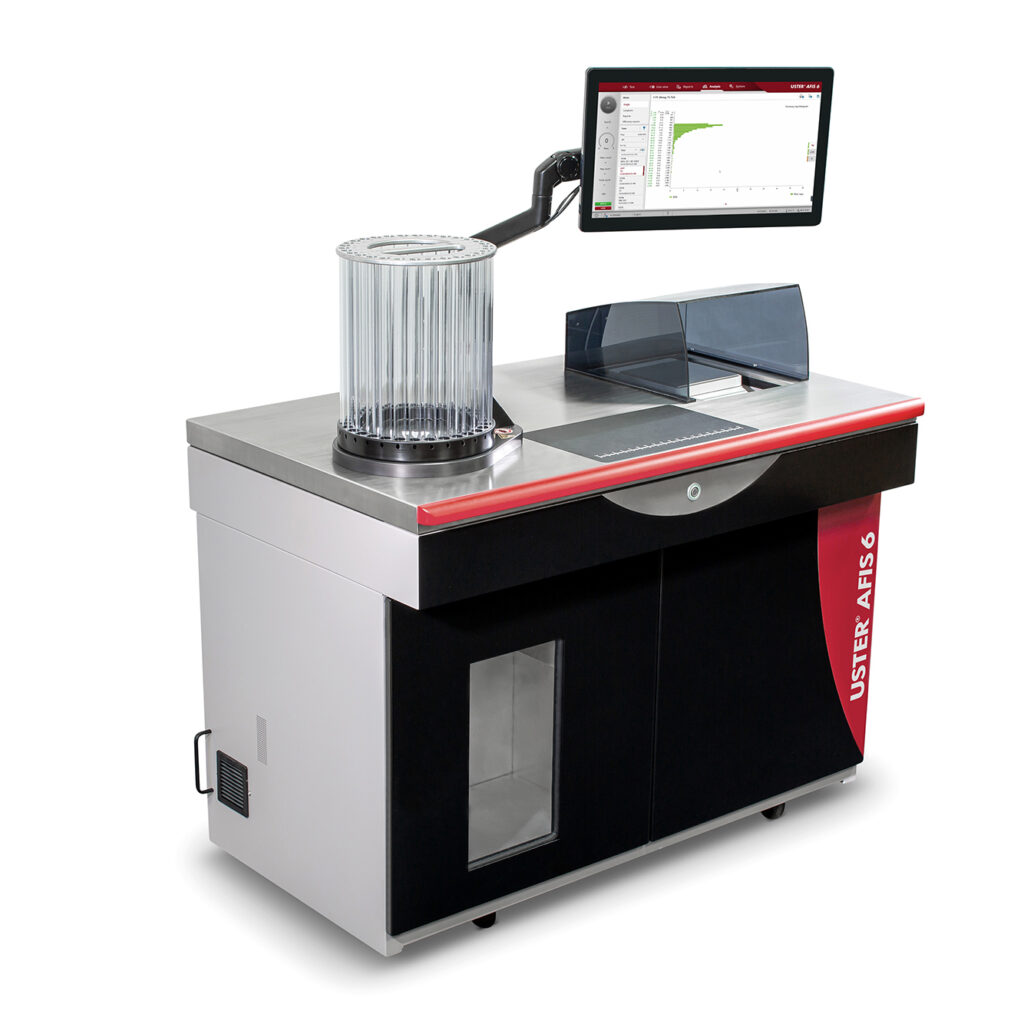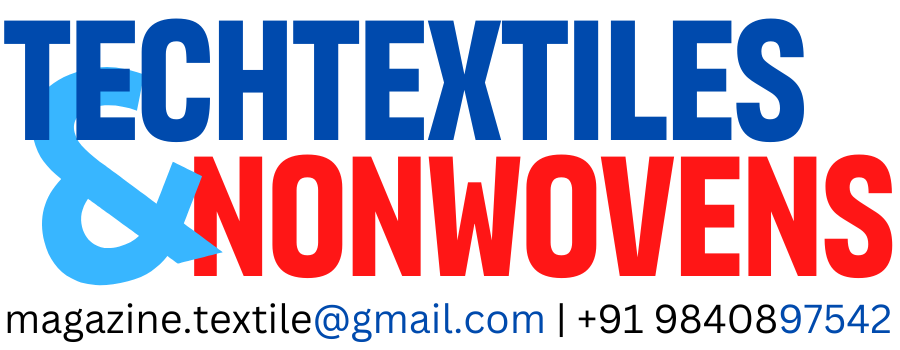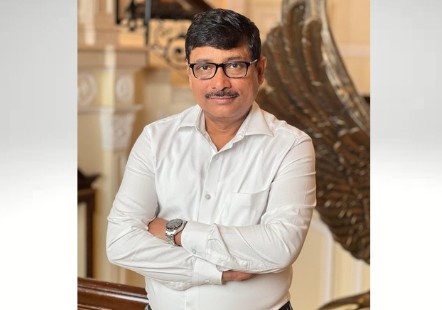An exclusive conversation with John Belew, General Manager – U.S. Operations, Uster Technologies, Inc., at Techtextil North America
In the world of textile production, quality is no longer just a finishing touch—it begins at the raw material level and continues throughout the value chain. At Techtextil North America, The Textile Magazine had the opportunity to speak with John Belew, General Manager – U.S. Operations at Uster Technologies, Inc., about the company’s latest innovations in quality assurance, predictive analytics, and its expanding footprint in both the technical textile and nonwoven segments.

Innovations on Display: From Loom to Lab
At this year’s show, Uster highlighted two significant advancements:
- Uster Q-Bar 2: An on-loom fabric inspection system using high-resolution cameras to detect defects during fabric production in real time. This system ensures issues are identified and corrected immediately, increasing productivity and minimizing waste.
- Uster AFIS 6 (Advanced Fiber Information System): The newly launched version of Uster’s market-leading fiber testing equipment. This new instrument replaces the previous AFIS PRO 2 and offers testing for key parameters like neps, seed coat fragments, and fiber fineness for man-made fibers recycled material and blends on top of cotton. “We launched it just this month—so new, in fact, that we only got the brochures on the final day of the show,” said Belew.
Together, these solutions reflect Uster’s strategic focus on upstream and downstream quality control—from fiber labs to weaving looms.
Global Quality Through Data-Driven Consistency
In an era where textile production spans multiple geographies, Uster’s systems offer manufacturers a reliable way to standardize quality across continents. “Take wind turbine fabrics, for instance,” explained Belew. “A single customer might produce components in seven or eight different countries, but they all ship to a centralized location. Our systems ensure that every batch meets the same quality standards—regardless of where it was made.”

Uster’s solutions are built on Uster Statistics, the industry benchmark for textile quality since 1957. With every test or inspection, producers receive globally comparable data, empowering them to deliver consistent performance.
From Reactive to Predictive: The Rise of Smart Quality Control
Uster’s push into predictive analytics is helping customers shift from reactive troubleshooting to proactive process management. One example is the Uster Tester 6, a flagship evenness tester equipped with advanced modelling capabilities.
“In spinning mills, this system can predict how a yarn will behave in subsequent processes like weaving or knitting,” said Belew. “In fabric inspection, we offer tools that analyze defect trends and recurring quality issues, turning data into actionable insights.”
This predictive approach not only enhances quality but also lowers costs and reduces waste—critical in competitive markets like technical textiles.
Industry 4.0 and Seamless Connectivity
When it comes to Industry 4.0, Uster focuses on system integration and data connectivity across entire production lines. From fiber testing to yarn clearing, their solutions are designed to talk to one another, enabling operators to trace issues back to their origin. Uster is transforming its offerings from products to solutions enabled with a new technology architecture prepared for an AI enabled future. Uster FiberQ is our first game changing solution that has already created an impact in early customers. There is much more to come.

“The goal is enable a more automated connected spinning mill or finishing plant,” said Belew. “We enable our systems to communicate, monitor, and learn from each other—laying the groundwork for self-optimizing operations.”
India at the Core of Innovation
With a robust spinning industry and growing emphasis on exports, India is one of Uster’s most important markets. The company has invested in a new innovation Center in India, focused on software development and product testing.
“We have a strong presence there—not just in sales, but in R&D and leadership,” Belew noted. “Our Head of Innovation & Marketing and our VP of After Sales both come from India and maintain deep ties with the industry. In fact, we’re currently piloting a new fabric inspection system for denim production in India.”
This localized engagement enables Uster to develop solutions specific to Indian market needs and then scale them globally.
Nonwovens and Technical Textiles: A Growing Frontier
Uster has made significant inroads into nonwovens by adapting its contamination and inspection technologies for wider, high-throughput applications. “We’ve developed systems specifically for nonwovens—particularly where the material can’t be touched, like in hygienic applications,” said Belew. “We’ve worked with companies like Kimberly-Clark to install customized inspection systems.”
From contamination control in raw materials to contact-free visual inspection in end-use applications, Uster is tailoring its offerings to meet the specific demands of the nonwoven and technical textile industries.
Conclusion: A Vision Beyond Quality
As global textile production evolves, Uster Technologies is redefining quality as a dynamic, predictive, and connected process. By integrating real-time data, predictive modeling, and global benchmarking, the company enables manufacturers to improve not just product quality—but operational performance.
With strategic investments in the U.S., India, and across nonwoven and technical textile segments, Uster is not just monitoring the future—it’s helping build it.





